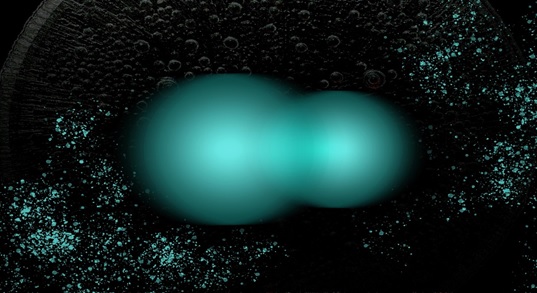Mysterious Hybrid Particle Concerning Electronics Uncovered
In the particle world, sometimes two is better than one. Take, for instance, electron pairs. When two electrons are bound together, they can glide through a material without friction, giving the material special superconducting properties. Such paired electrons, or Cooper pairs, are a kind of hybrid particle — a composite of two particles that behaves as one, with properties that are greater than the sum of its parts.
Now MIT physicists have detected another kind of hybrid particle in an unusual, two-dimensional magnetic material. They determined that the hybrid particle is a mashup of an electron and a phonon (a quasiparticle that is produced from a material’s vibrating atoms). When they measured the force between the electron and phonon, they found that the glue, or bond, was 10 times stronger than any other electron-phonon hybrid known to date. [1]

Figure 1. Mysterious Hybrid Particle Concerning Electronics Uncovered
Figure 1 shows thanks to the tireless efforts of researchers worldwide, discoveries relating to quantum technology, photonics, superconductivity and countless other areas have continued to shape the future of electronics.
Adding to this, physicists at the Massachusetts Institute of Technology (MIT) have now come across a hybrid particle made up of electrons and phonons (a quasiparticle produced from vibrating atoms) that are bonded by a force nearly 10 times stronger than any other electron-phonon hybrid known to date.
This suggests that upon electrically exciting the hybrid particle, the change in its constituents (both electrons and phonons) lead to a consequent change in a material’s structural or magnetic properties. By leveraging this revelation, existing magnetic semiconductors can improve for faster and more energy-efficient electronics. [2]
Magnetically visible
Normally, the motion of electrons and other subatomic particles are too fast to image, even with the world’s fastest camera. The challenge, Gedik says, is similar to taking a photo of a person running. The resulting image is blurry because the camera’s shutter, which lets in light to capture the image, is not fast enough, and the person is still running in the frame before the shutter can snap a clear picture.
Particle sheets
The field of modern condensed matter physics is focused, in part, on the search for interactions in matter at the nanoscale. Such interactions, between a material’s atoms, electrons, and other subatomic particles, can lead to surprising outcomes, such as superconductivity and other exotic phenomena. Physicists look for these interactions by condensing chemicals onto surfaces to synthesize sheets of two-dimensional materials, which could be made as thin as one atomic layer. [3]
References:
- https://news.mit.edu/2022/physicists-detect-hybrid-particle-held-together-uniquely-intense-glue-0110
- https://www.electronicsforu.com/news/whats-new/mysterious-hybrid-particle-concerning-electronics-uncovered
- https://scitechdaily.com/mit-physicists-detect-strange-hybrid-particle-held-together-by-uniquely-intense-glue/
Cite this article:
Thanusri swetha J (2022), Mysterious Hybrid Particle Concerning Electronics Uncovered, pp. 93

